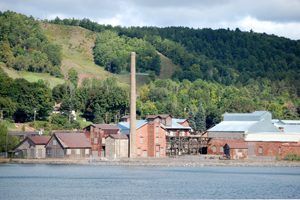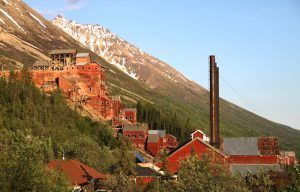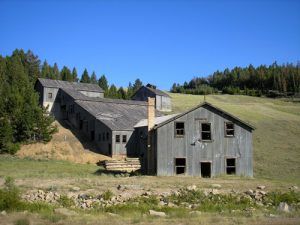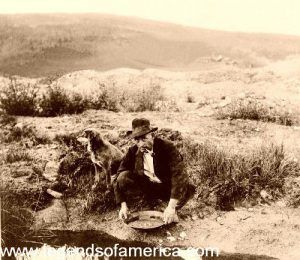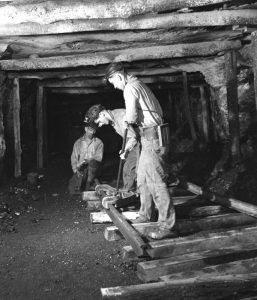Central Mine, Michigan – Copper Ghost Preserved
Creede Colorado – Silver & Gold on the Rio Grande
Early Mining Discoveries in Nevada
Fayette Historic Townsite, Michigan
Illinois Coal Mining Towns on Route 66
Kennecott Mine & Mill Town, Alaska
Keweenaw National Historic Park, Michigan
Ludlow and the Colorado Coalfield War
Mary Jane Simpson – The Lady and the Mule
Mining History in the United States
Mining the Investor, Not The Mine
Mining in the Rocky Mountain West
Reed Gold Mine, North Carolina – First Gold Discovery
Revitalizing Abandoned Coal Mining Towns: Exploring Opportunities for Repurposing and Sustainability
Riot in Rock Springs Leads to Massacre, Wyoming
Silver Mining in the United States
Ruggles Mine – Mica Mining in New Hampshire
Tommyknockers of the Western Mines
What a clover-field is to a steer, the sky to a lark, a mud hole to a hog, such are the new diggings to a miner.
— The Oregonian, 1862
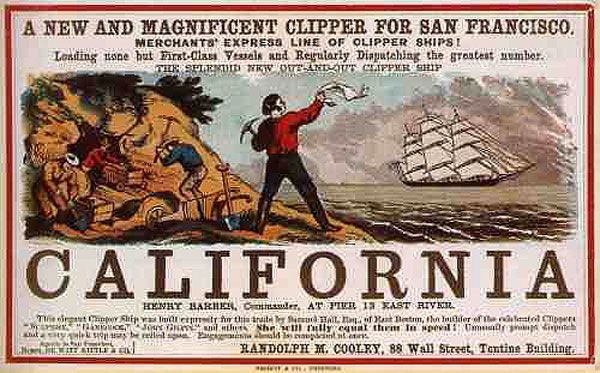
To California during the gold rush.
Though various types of mines have existed across the nation almost since America’s discovery, those in the American West are, and were, the most plentiful. The history they’ve left in their wakes is of romance, fortunes made and lost, hardships, greed, Indian Wars, and numerous crusty old ghost towns.
From the beginning, America presented an image of golden wealth, which has never been lacking to the rest of the world. A critical factor in shaping the national character of this country, the discovery of gold and other precious metals in the American West accelerated western expansion, beginning with the California Gold Rush in 1848.
After discovering gold in California, which clearly showed how rich the strikes could be, more prospectors by the thousands headed west to explore every promising region in their search for wealth. To these many adventurers, no mountain was too high to climb, no canyon too precarious to descend, and no river too difficult to cross. They were a determined lot.
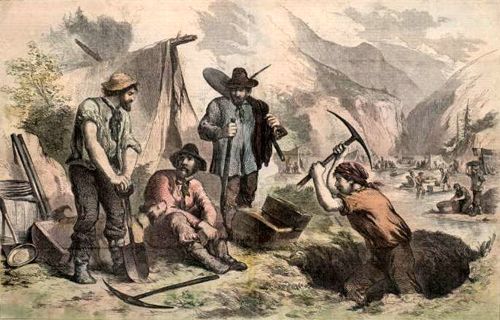
California Gold Miners.
Though there was never another find that was as large as that of California, numerous others led prospectors by the thousands to the west, sure that they would find their fortune. In 1859, gold was found near Denver, Colorado, and the Comstock Lode was developed in Nevada. In the 1860s, precious minerals were found in eastern Oregon, Montana, and Idaho. In the 1870s, more strikes were made in the Black Hills of South Dakota and Tombstone, Arizona. Other finds led to boom camps in the Coeur d’Alene region in Idaho in 1883 and the Klondike Gold Rush in 1898.
Many states in the American West were initially settled primarily by prospectors and miners, including Nevada, Colorado, Idaho, Arizona, Montana, North Dakota, South Dakota, and Alaska. Though explorers, trappers, and traders had traveled to these states and others, there were far more miners than those other fearless pioneers. These states’ histories are intimately tied to mining activities, and many became territories and attained state status because of the mining activities.
Early attention to mining focused on gold and silver discoveries. However, later, discoveries of industrial minerals like coal, copper, iron, oil, and gas stimulated the new and continued growth of settlements in the West.
Several men made their fortunes and gained fame for their mining activities, such as George Hurst, who made his fortune in the Comstock Lode of Nevada; Horace Tabor, who became the silver king of Colorado after grubstaking a miner in Leadville; George W. MacKay, who also made his fortune in the Comstock Lode; and many others.
However, most became laborers, working for poor wages in dangerous environments and desolate communities. Their glamorous and romantic images of mining were more often dashed as they performed back-breaking work and experienced numerous mining accidents.
Of the many mining camps of the American West, other types of growth stimulated some, and they continue to exist today — cities such as Butte, Montana; Silver City, New Mexico; El Dorado, California; and many more.
 But others faded into insignificance, leaving behind only shells of their former selves, becoming ghost towns decades ago. Of yet more, there is no sign of their prosperous times whatsoever, except for a debris-strewn and pockmarked landscape.
But others faded into insignificance, leaving behind only shells of their former selves, becoming ghost towns decades ago. Of yet more, there is no sign of their prosperous times whatsoever, except for a debris-strewn and pockmarked landscape.
The mining industry of the American West not only created fortunes and disappointment for the individual miners but also played an important part in American labor history, mining technology, and the growth of geological knowledge. It was also responsible for displacing thousands of Native Americans, leading to several Indian Wars and their forcible removal to reservations. Another negative impact that these many mining booms left behind was massive environmental scars, which are still being addressed today.
Today, hundreds of ghost towns in the American West pay tribute to their more prosperous times. Some, like Bodie, California; Bannack, Montana; and Bayhorse, Idaho, have been preserved as state parks. Others have become commercial tourist destinations, such as Tombstone, Arizona; South Pass City, Wyoming; and Virginia City, Nevada. However, many more are slowly returning to the elements as their crumbling structures deteriorate over time. A few of these include Comet, Montana; Delamar, Nevada; Steins, New Mexico; Miners Delight, Wyoming; and dozens of others.
© Kathy Alexander/Legends of America, updated April 2024.
Also See:



